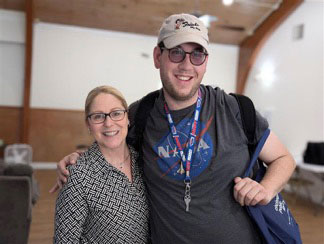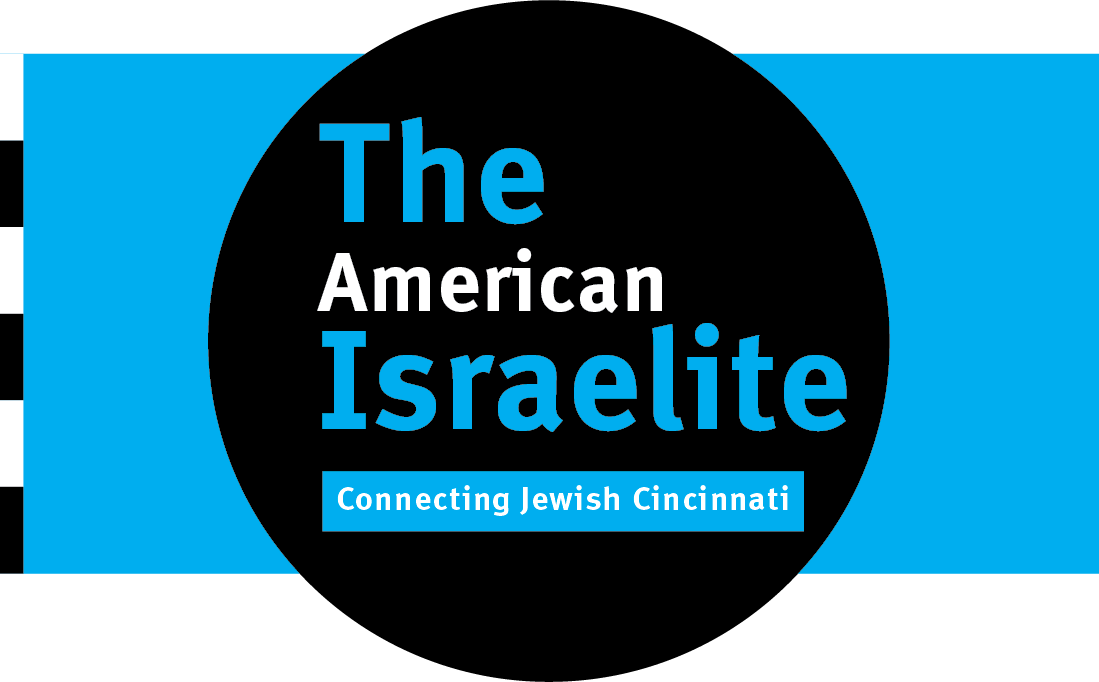Courtesy of Jewish Federation of Cincinnati.
Halom House Executive Director Amy Fischer stands with one of the individuals helped by the agency
Submitted by Jewish Federation of Cincinnati
Andrea Baron remembers stepping into Halom House for the first time. She had driven past it countless times but had never seen inside. Walking through the home, she met residents, admired their artwork and saw firsthand how this space gave adults with disabilities not just a place to live, but a place to thrive. That moment stuck with her.
As Vice President of Local Allocations, Andrea plays a key role in guiding how Federation supports Jewish Cincinnati’s essential programs. She and other lay leaders work together to review funding requests, visit agencies and ensure that community dollars go where they are needed most. Now, as Federation begins rolling out updates to the Local Allocations process, she is excited about what’s ahead.
“This isn’t about changing everything — it’s about making sure we’re doing the best we can for the agencies and programs that rely on us,” Andrea explains. “At the end of the day, this isn’t just about numbers — it’s about people. It’s about making sure students at our Hillels feel safe, that seniors at the Mayerson JCC have access to meals, that families get the support they need.”
Why Federation is Evolving Local Allocations
For years, Federation has ensured that every dollar raised is used wisely to support local agencies. But as the world changes, so must our approach to funding. The updates to Local Allocations are designed to enhance what already works while deepening collaboration with agencies to help them grow and adapt.
Three key shifts are guiding this evolution:
1. Helping Agencies Provide Life-Changing Support: This work has already begun with agency partnership calls. Federation isn’t just a funder — it’s a partner, working alongside agencies to make sure they have the tools, resources and guidance to serve the community with confidence and care.
2. More Clarity: This summer, volunteers will follow a structured evaluation process, ensuring funding decisions are thoughtful, fair and transparent. Agencies will also have a clearer understanding of what’s expected of them when applying for funding.
3. A Focus on Impact: Funding decisions should reflect not just how many people are served, but how lives are improved. Federation has begun revising the funding application to prioritize measurable outcomes alongside traditional metrics — ensuring support helps create lasting change in Jewish Cincinnati. Instead of focusing only on attendance, volunteers will learn to assess the tangible ways programs enhance stability, strengthen Jewish identity and build a sustainable future for our community.
Andrea’s Perspective: A More Engaging Volunteer Experience
Lay leaders like Andrea are at the heart of this process. Volunteers give their time to review funding requests, visit agencies and engage in thoughtful discussions about community priorities. With the updates to Local Allocations, Andrea feels more prepared than ever to make informed recommendations.
“In the past, decisions sometimes felt more subjective,” she shares. “Now, we’re all using the same set of criteria, so funding decisions are fair and consistent.”
One change she particularly values is how volunteers will now be able to provide structured feedback immediately after site visits. “Before, we might visit an agency and not discuss it again for weeks. Now, we will capture our thoughts while they’re fresh, which makes the process stronger.”
What This Means for the Future
The changes underway will give volunteers a more informed approach to funding decisions and help agencies provide life-changing support with confidence and care. At its core, this isn’t just about funding — it’s about making sure agencies have the resources and guidance they need to best support our community members at all stages of life. Andrea sees this as an opportunity to build an even stronger Jewish Cincinnati. “We’re still rolling this out, and I know we’ll keep learning along the way. But what I love about this process is that it’s always focused on what matters most — helping our community thrive.”




